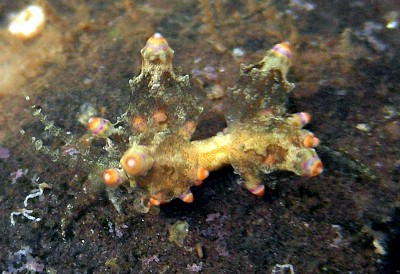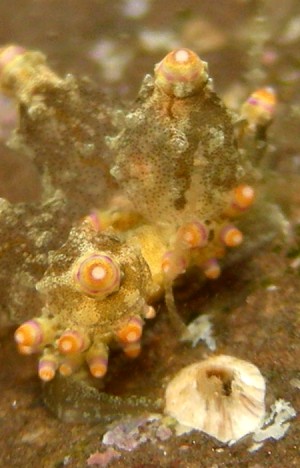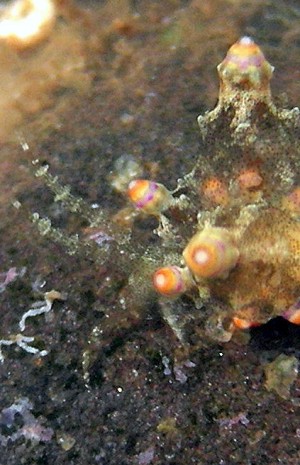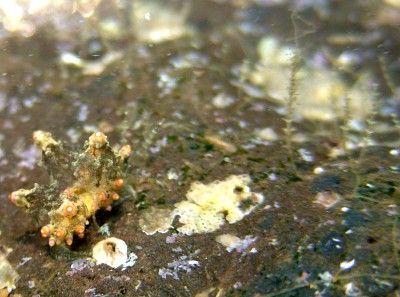Eubranchus mandapamensis from Ratnagiri, India
May 15, 2009
From: Vishal Jayant Bhave

Concerning message #4869:
Dear Bill,
I found this under and intertidal rock encrusted with hydroids. I have doubts about the synonomy of Eubranchus rubropunctatus Edmunds, 1969 and Eubranchus mandapamensis Rao, 1968 (as per nudipixel link http://www.nudipixel.net/species/eubranchus_mandapamensis/)
Locality: Rock patch, Mandavi,Ratnagiri, 0.5 feet, Maharashtra, India, Arabian sea, 08 February 2009, below rock in the Rock pool, Intertidal with . Length: 10 mm. Photographer: Vishal Bhave.
Vishal Bhave
vishalbhave@gmail.com



Dear Vishal,
Thanks for these photos. Terry Gosliner suggested to me some years ago that he thought E. rubropunctatus and E. mandapamensis to be synonyms but I felt there were enough inconsistencies in Rao's description to wait until we had more information. Your photo certainly matches Rao's description of E. mandapamensis quite well and certainly links Edmund's description of the cerata having two subapical ceratal yellow bands with a bluish band with red spots between, with Rao's description of an orange band near the tip with a pink or purple-coloured band just below.
However Edmund's E. rubropunctatus has distinct papillae scattered over the rhinophores while Rao clearly describes and draws evenly spaced annulations on the rhinophores. In fact Rao erected a new genus for this species - Annulorhina - to recognise these ringed rhinophores. A third 'form' I have seen has smooth rhinophores [Eubranchus cf. rubropunctatus from Hong Kong]. Looking at the nudipixel site you refer to I can see examples of the three rhinophore types.
While it is possible that one species could have this degree of rhinophoral variability I can't think of another example. At this stage I suggest we take a conservative approach and keep the three rhinophore types separate until we know more about the anatomy and variability of this species or group of species. These are not the only species of eubranchids with fine brown specks and inflated tuberculate cerata. One other species Rao described in the same paper, Capellinia fuscannulata, is almost certainly what I am calling Dunga ocellata on the Forum.
-
Gosliner, T. 1990. Additions to the aeolidacean fauna of the tropical eastern Pacific. Western Society of Malacologists Annual Report, 22: 16.
-
Rao, K. P. 1968. On a new genus and some new species of opisthobranchiate gastropods of the family Eubranchidae from the Gulf of Mannar. Proceedings of the Symposium on Mollusca held at Cochin from January 12 to 16, 1968. Symposium series 3, part 1, pp. 51-60. Marine Biological Association of India, Mandapam Camp, India.
Best wishes,
Bill Rudman
Related messages
-
Eubranchus rubropunctatus or E. mandapamensis
From: Lawrence Neal, April 13, 2010 -
Re: Eubranchus mandapamensis from Ratnagiri, India
From: Vishal Bhave, May 20, 2009
